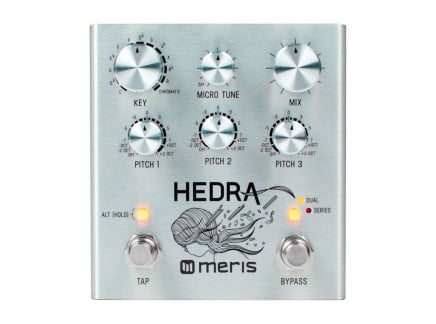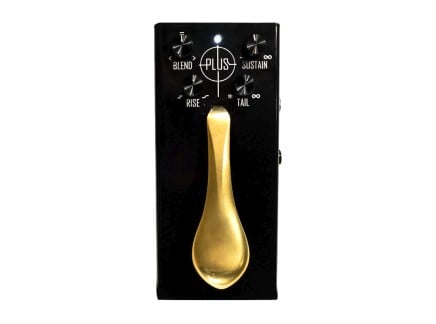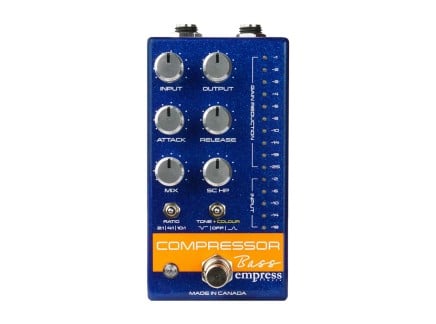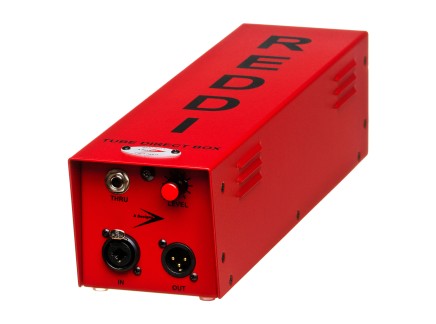If you've been keeping up with Signal or our YouTube channel, you're probably aware that we're big fans of using guitar effect pedals to process all sorts of sounds, from drum machines and synths to acoustic instruments. Today, we invited our pal Josh to talk through his personal setup—in which he uses an upright bass with a small complement of pedals to create everything from synth-like basslines to atmospheric textures.
We've talked about similar topics in past articles with Janek Gwizdala and our very own Bryce, so be sure to check those out if you're looking for additional ideas for turning your bass (or other instruments) into something altogether more peculiar by using effects. But for now, let's take a look at Josh's pedal setup and see what each piece has to offer.
A Tour of Josh's Setup
Josh's signal flow starts, of course, with the upright bass, which he uses in everything from combo to solo contexts. The pedal signal path starts with pedals related to dynamic management. The first is a Dunlop Volume (X) Mini pedal, providing a compact way of managing levels. An important consideration in Josh's case is that acoustic instruments—even acoustic instruments with pickups—can produce feedback in live settings under just the right circumstances. Having a quick, straightforward way of ducking levels if things start to get out of hand is critical, especially on instruments where you don't have a built-in volume control or your hands are consistently occupied.

Next, he passes into the Empress Bass Compressor, one of our favorite compressor pedals altogether. With all the controls you'd expect from a studio-grade compressor, this pedal makes it dead simple to dial in exactly the level of punch and dynamic response you desire. In Josh's case, it's quite important for solo contexts, especially solos that hinge on a lot of pizzicato playing, where there is a huge difference in natural dynamics between the "pluck" of the string and the sustain. Using the compressor evens this out, helping the bass to project much more clearly while maintaining a clear sense of articulation. This is super helpful for upright bass in amplified contexts.
Next comes the Meris Hedra, yet another favorite among us folks at Perfect Circuit. Hedra is a three-head delay, where each delay head has its own dedicated pitch shifter. What's particularly interesting about Hedra is that the pitch shifting doesn't need to be set to fixed chromatic intervals (as it would be on a typical pitch shifter)—instead, you can dial in a specific global key and a diatonic interval for each head, making it such that the yielded harmonies are always part of the currently selected key. This is great for building rhythmic accompaniments that follow your playing, or for just making outright insane pitch-shifted delay textures. It's tremendously inspiring, and super playable when used with an external expression pedal or MIDI controller.
The sound then passes t the 3 Leaf Audio Octabvre, a combination of the classic Boss OC-2 circuit (a favorite among bassists) with some of 3 Leaf's own circuitry magic—designed for session bassist and general octaver aficionado Tim Lefebvre. From there, the sound passes to the Moog Moogerfooger MF-101 Lowpass Filter—one of the finest effect pedals ever made, in my opinion. The MF-101 combines the classic Moog ladder filter with an envelope follower and an always-on drive control. Frankly, the drive control is enough to justify the price; it makes for an excellent-sounding distortion/overdrive with plenty of low end. The filter, of course, is second to none, and offers plenty of CV functionality on the rear panel for those looking to experiment with a modular-like workflow in pedal format.
Next up is the Chase Bliss Warped Vinyl, an analog chorus/vibrato with an insane degree of tonal customization. You can use it for everything from subtle warbling to drastic chops/trills—though it is perhaps at its best turning incoming sounds into a lo-fi, swimming syrup.
One of the most interesting parts of the setup is the Gamechanger Audio Plus Pedal, which provides a piano-like sustain pedal for "freezing" and sustaining incoming audio. With a super natural, continuous response, it's an excellent way of turning any incoming sound (even monophonic sounds) into a huge textural wall—which, as Josh points out, is an excellent way of ensuring that you have support during solo playing, even when all your other band members drop out. I can only imagine all the possibilities combining Hedra with Plus Pedal, for instance—harmonies that rhythmically evolve and freeze in time, all following right along with what you're playing.
The final step in the signal path is the A-Designs REDDI: frankly, one of the finest DIs on the market. It's a tube-based DI great for adding extra coloration, and it features a dedicated level control—making it easily possible to dial in a final volume after your effect chain. If you want a stellar-sounding DI, this is a particularly fantastic option.
Pedals as Reactive Accompaniment
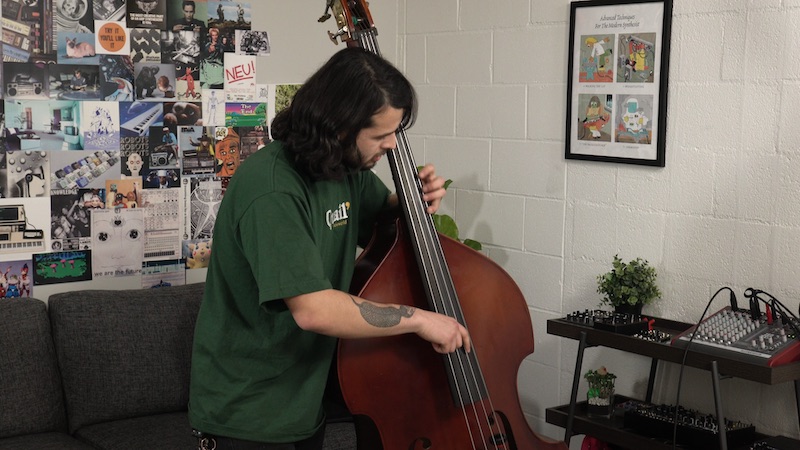
Taking a look at another musician's pedal signal flow can be tremendously revealing, even if you don't necessarily play the same instrument as them. Considering Josh's use of the Bass Compressor for dynamic management before the other effects, for instance, is a lesson of use to almost any musician. Similarly, the idea of using a complex, spectrally rich effect that follows your playing (like Hedra or Plus Pedal) as a means of generating your own accompaniment/sonic support as you play is an inspiring concept. It's not just about having a cool delay/echo—instead, it's about playing into a system that plays back with you, giving you something to lean into and react to as an improvisor.
Of course, there's no end to the number of ways you can approach effect processing for live performance. With no doubt, we'll return soon to discuss even more approaches to transforming the sound of your instruments!

